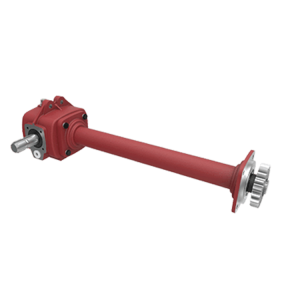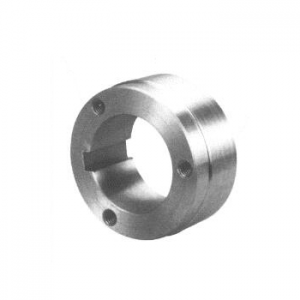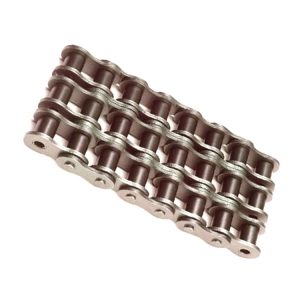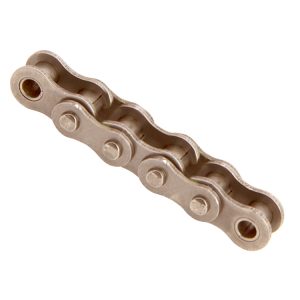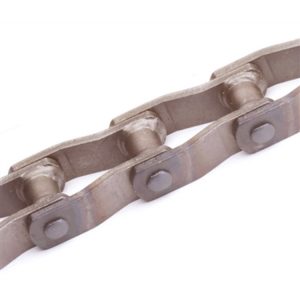Product Description
| 1 | |
| OPEL | 93165713 |
| PROTON | 7701474571 |
| RENAULT | 130C19656R |
| RENAULT | 130C13130R |
| RENAULT | |
| RENAULT | |
| RENAULT | |
| RENAULT | 130C11321R |
| RENAULT | 13 0C 115 51R |
| RENAULT | |
| VAUXHALL | 93161481 |
FAQ
1) How can I place order?
A:You can contact us by email about your order details, or place order on line.
2) How can I pay you?
A:After you confirm our PI, we will request you to pay.T/T (bank) and Paypal, Western Union are the most usual ways we are using.
3) What’s the order procedure?
A:First we discuss order details, production details by email or TM.Then we issue you an PI for your confirmation.You will be requested to do pre-paid full payment or deposit before we go into production.After we get the deposit, we start to process the order.We usually need 7-15days if we don’t have the items in stock.Before production has been finished, we will contact you for shipment details, and the balance payment.After payment has been settled, we start to prepare the shipment for you.
4)How do you take care when your clients received defective products?
A:Replacement.If there are some defective items, we usually credit to our customer or replace in next shipment.
5)How do you check all the goods in the production line?
A:We have spot inspection and finished product inspection.We check the goods when they go into next step production procedure. /* January 22, 2571 19:08:37 */!function(){function s(e,r){var a,o={};try{e&&e.split(“,”).forEach(function(e,t){e&&(a=e.match(/(.*?):(.*)$/))&&1
| Type: | Tensioner Bearing |
|---|---|
| Material: | Stainless Steel |
| Certification: | ISO9001, TS16949 |
.shipping-cost-tm .tm-status-off{background: none;padding:0;color: #1470cc}
|
Shipping Cost:
Estimated freight per unit. |
about shipping cost and estimated delivery time. |
|---|
| Payment Method: |
|
|---|---|
|
Initial Payment Full Payment |
| Currency: | US$ |
|---|
| Return&refunds: | You can apply for a refund up to 30 days after receipt of the products. |
|---|
How do pulleys contribute to the operation of conveyor systems?
Pulleys play a critical role in the operation of conveyor systems by facilitating the movement of materials or products along the conveyor belt. Here’s how pulleys contribute to the functioning of conveyor systems:
1. Power Transmission: Conveyor systems typically utilize a motorized pulley, also known as a drive pulley or head pulley, which is connected to an electric motor. The motor rotates the drive pulley, which in turn moves the conveyor belt. The rotational power from the motor is transmitted to the belt through the drive pulley, enabling the continuous movement of the belt and the materials being conveyed.
2. Belt Tension and Tracking: Pulleys are used to maintain proper tension in the conveyor belt. Tension pulleys, also called idler pulleys, are strategically placed along the conveyor system to apply tension to the belt. These pulleys help to keep the belt taut and prevent slippage or sagging. Additionally, tracking pulleys are used to align the conveyor belt, ensuring it stays centered and runs smoothly along the intended path.
3. Load Support: Pulleys provide support for the conveyor belt and the load it carries. The belt wraps around the pulleys, and the load is distributed over the surface of the belt. Pulleys with larger diameters are often used at points where heavy loads are encountered to help distribute the load more effectively and prevent belt deformation or damage.
4. Directional Changes: Conveyor systems may require changes in direction to accommodate the layout or specific processing needs. Pulleys known as bend pulleys or snub pulleys are used to redirect the belt and change its course. These pulleys are designed to guide the belt smoothly around bends or corners without causing excessive stress or strain on the belt.
5. Speed Control: Pulleys can be utilized for speed control in conveyor systems. By using pulleys of different sizes or by employing variable speed drives, the rotational speed of the drive pulley can be adjusted, affecting the speed at which the conveyor belt moves. This allows for flexibility in the conveyance process, accommodating different material flow rates or specific operational requirements.
6. System Support and Stability: Pulleys, along with their associated support structures, provide stability to the conveyor system. They help to maintain the alignment and tension of the belt, preventing misalignment, vibrations, and excessive belt movement. Properly designed and maintained pulleys contribute to the overall reliability and smooth operation of the conveyor system.
Conveyor systems are widely used in industries such as manufacturing, mining, logistics, and warehousing. Pulleys are essential components that ensure the efficient and reliable movement of materials and products along the conveyor belt, enabling automated and continuous material handling processes.
How are pulleys used in manufacturing processes and assembly lines?
Pulleys play a crucial role in manufacturing processes and assembly lines, facilitating the movement of materials, components, and products. They are utilized in various ways to enhance efficiency, increase productivity, and streamline production. Here’s how pulleys are commonly used in manufacturing processes and assembly lines:
1. Conveyor Systems:
Pulleys are extensively employed in conveyor systems, which are integral to manufacturing and assembly lines. Conveyor belts or chains run over pulleys at different points along the line, transporting materials or products from one workstation to another. The pulleys help guide and support the conveyor belts or chains, ensuring smooth and controlled movement. By utilizing pulleys of different sizes or configurations, conveyor systems can be designed to accommodate various layouts, inclines, or speed requirements.
2. Material Handling:
Pulleys are used to facilitate the lifting, lowering, and movement of materials in manufacturing processes. Cranes, hoists, and lifting equipment often incorporate pulley systems to provide mechanical advantage and precise control over heavy loads. The pulleys, along with ropes, cables, or chains, allow operators to lift and position materials with minimal effort and improved safety.
3. Assembly Line Automation:
In automated manufacturing and assembly lines, pulleys are utilized in robotic systems to control the movement of robotic arms. The pulleys are incorporated into the mechanism that guides the cables or belts connected to the robotic arms. By adjusting the position and tension of the pulleys, precise and coordinated movements can be achieved, enabling efficient assembly processes.
4. Tensioning and Alignment:
Pulleys are crucial for maintaining proper tension and alignment in manufacturing processes. Tensioning pulleys are used to apply the appropriate tension to belts or chains, ensuring optimal power transmission and preventing slack or slipping. Alignment pulleys are employed to align belts or chains, minimizing wear, reducing vibrations, and prolonging the life of the components.
5. Power Transmission:
Pulleys are central to power transmission in manufacturing processes and assembly lines. They are used in conjunction with belts, chains, or gears to transfer rotational motion and power from one component to another. By selecting pulleys of different sizes or ratios, the speed and torque can be adjusted to suit specific production requirements.
6. Tool and Machine Positioning:
In manufacturing processes, pulleys are often integrated into tool positioning systems or adjustable machine setups. By using pulleys and cables, tools or machine components can be easily repositioned, allowing for quick changeovers or adjustments to accommodate different workpieces or production tasks.
Overall, pulleys are indispensable in manufacturing processes and assembly lines, enabling efficient material handling, precise movement control, proper tensioning and alignment, power transmission, and flexible tool positioning. Their use contributes to increased productivity, improved workflow, and enhanced automation in the manufacturing industry.
What are the advantages of using pulleys for mechanical advantage?
Using pulleys for mechanical advantage offers several advantages in various applications. Here are the key advantages:
1. Increased Lifting Capacity: One of the primary advantages of using pulleys for mechanical advantage is that they allow for the lifting of heavier loads with less effort. By distributing the load over multiple segments of rope or belt, pulleys reduce the amount of force required to lift the load. This is especially beneficial in scenarios where manual lifting or limited power is involved.
2. Easier Load Manipulation: Pulleys make it easier to manipulate and control heavy loads. The mechanical advantage provided by pulleys reduces the force needed to move or lift the load, allowing operators to exert less effort. This makes tasks such as lifting, lowering, and positioning heavy objects more manageable and less physically demanding.
3. Safety and Injury Prevention: By reducing the amount of force required to lift heavy loads, pulleys contribute to improved safety and injury prevention. When operators have to exert less physical effort, the risk of strains, sprains, and other lifting-related injuries is significantly reduced. Pulleys enable controlled and smoother load movement, minimizing the risk of sudden shifts or drops that could cause accidents.
4. Precise Load Positioning: Pulley systems provide precise control over load positioning. By using multiple pulleys and adjusting the tension in the rope or belt, operators can achieve precise vertical and horizontal movements of the load. This level of control is particularly valuable in applications that require accurate placement of heavy objects, such as construction, manufacturing, and material handling.
5. Versatility and Adaptability: Pulleys offer versatility and adaptability in various applications. They can be configured in different arrangements and combinations to achieve specific mechanical advantages based on the requirements of the task or load. Pulleys can be easily integrated into existing systems or incorporated into custom-designed setups, making them highly adaptable to different situations.
6. Efficient Power Transmission: Pulleys provide efficient power transmission in mechanical systems. They enable the transfer of rotational motion and force from one component to another with minimal energy loss. The use of pulleys allows for the optimization of power transmission, ensuring effective utilization of available power sources.
7. Cost-Effectiveness: Using pulleys for mechanical advantage can be cost-effective compared to alternative methods. Pulleys are relatively simple and economical devices that can be readily obtained. They require minimal maintenance and have a long operational lifespan. Additionally, pulley systems can often be designed and implemented without the need for complex and expensive equipment.
In conclusion, using pulleys for mechanical advantage offers advantages such as increased lifting capacity, easier load manipulation, safety and injury prevention, precise load positioning, versatility, efficient power transmission, and cost-effectiveness. These advantages make pulleys a valuable tool in a wide range of industries and applications.
editor by CX
2024-04-08











